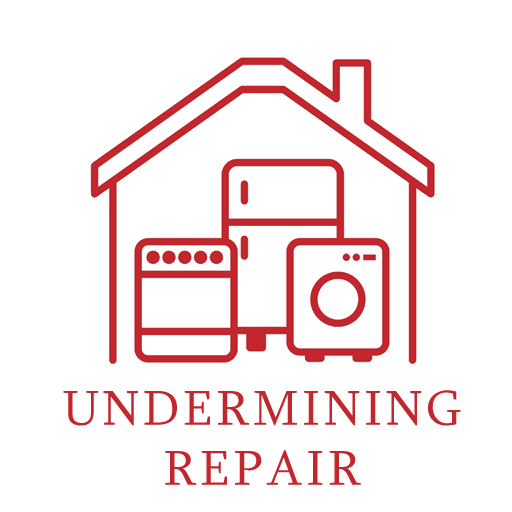How Smart Home Appliances Are Revolutionizing Repair Services with Predictive Maintenance Technology
The appliance repair industry is experiencing a technological revolution that’s transforming how we maintain our home appliances. By 2025, businesses across multiple sectors will increasingly leverage predictive maintenance strategies enhanced by IoT technologies to proactively address equipment issues, minimize failures, and enhance productivity. This shift from reactive to proactive maintenance is creating unprecedented opportunities for both homeowners and service providers to prevent costly breakdowns before they occur.
The Rise of IoT-Enabled Appliance Monitoring
The number of devices connected to the IoT is expected to hit 22 billion by 2025. This proliferation of technology has been primarily driven by the widespread adoption and deployment of sensors and smart devices, advanced analytics and Artificial Intelligence. Modern appliances now come equipped with sophisticated sensors that continuously monitor performance indicators such as temperature, vibration, energy consumption, and operational cycles.
Companies are now looking to use IoT-enabled appliances to send real-time performance updates that could help catch small issues before they become larger problems. This technology allows appliances to communicate their health status directly to manufacturers, service providers, and homeowners, creating a proactive maintenance ecosystem.
Real-World Applications in Home Appliances
The practical applications of predictive maintenance in home appliances are already becoming reality. As an example, refrigerators might be showing signs of having a compressor issue that starts off as a glitch but then turns into a full breakdown if not caught early. Smart washing machines can detect unusual vibrations or water temperature irregularities that indicate potential component failure.
In smart homes, everyday devices like refrigerators, washing machines, and security systems are seamlessly connected to the IoT network. This connectivity allows people to optimize energy use and minimize inconvenient failures. For New York homeowners, this technology is particularly valuable given the high cost of emergency repairs and the inconvenience of appliance failures in busy urban lifestyles.
Benefits for Manhattan and Long Island Residents
For residents in Manhattan, Queens, and Long Island, predictive maintenance offers significant advantages. As many as $630 billion could be saved annually by 2025 by predictive maintenance in the industrial industry alone. While this statistic applies to industrial settings, the same principles of cost savings and efficiency apply to residential appliances.
The technology is particularly beneficial for specialized systems like the Central Vacuum in Manhattan, where early detection of issues can prevent system-wide failures that would be costly and disruptive to repair in high-density urban environments.
How Predictive Maintenance Works
One of the key trends in predictive maintenance is the increased deployment of IoT sensors for real-time equipment monitoring. IoT sensors gather continuous data from various machinery, allowing businesses to proactively predict and address maintenance needs before critical failures occur. The process involves several key components:
- Data Collection: Sensors continuously monitor appliance performance metrics
- Analysis: AI algorithms analyze patterns to identify potential issues
- Alerts: Automated notifications are sent to homeowners and service providers
- Scheduling: Maintenance is scheduled at optimal times to prevent failures
The Accuracy and Reliability Factor
The accuracy of IoT predictive maintenance predictions can vary widely depending on the quality of data, the sophistication of the predictive algorithms, and the specific use case. In general, when implemented properly, IoT predictive maintenance can be highly accurate, often achieving prediction accuracies above 90%.
According to Deloitte, companies adopting sensor-driven predictive maintenance can reduce unplanned downtime by up to 25%. This translates to significant savings for homeowners who can avoid emergency service calls and extend the lifespan of their appliances.
The Future of Appliance Repair Services
Gartner forecasts that by 2025, companies utilizing AI-driven predictive maintenance will achieve a 10–20% reduction in maintenance costs. This trend is reshaping how appliance repair services operate, moving from reactive emergency repairs to scheduled preventive maintenance.
If an issue is identified, companies will notify customers through smart appliance apps or via email to schedule repairs. They will also send out notifications to help customers use more energy-efficient settings. This proactive approach benefits both service providers and customers by reducing emergency calls and improving customer satisfaction.
Preparing for the Smart Appliance Revolution
As predictive maintenance technology becomes more widespread, homeowners should consider several factors when purchasing new appliances or upgrading existing systems. Look for appliances with built-in IoT capabilities, ensure your home’s Wi-Fi network can support multiple connected devices, and choose service providers who are equipped to handle smart appliance diagnostics.
For residents in the New York area, working with experienced local service providers who understand both traditional repair methods and emerging smart technologies is crucial. Companies that have adapted to serve both conventional and smart appliances will be best positioned to provide comprehensive maintenance solutions.
The integration of predictive maintenance technology in home appliances represents a fundamental shift toward more efficient, cost-effective, and convenient home maintenance. As this technology continues to evolve, homeowners who embrace these innovations will benefit from reduced repair costs, improved appliance longevity, and the peace of mind that comes with proactive maintenance.
